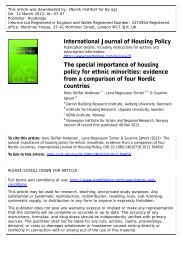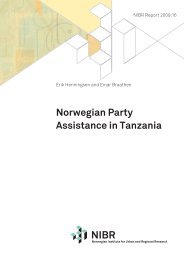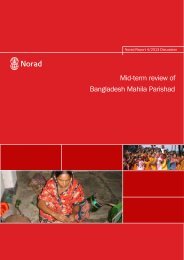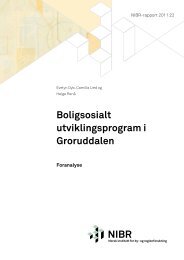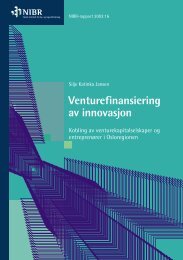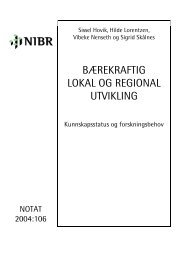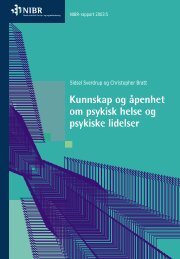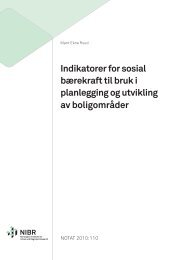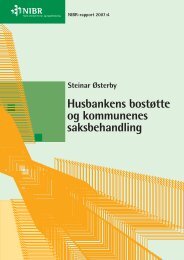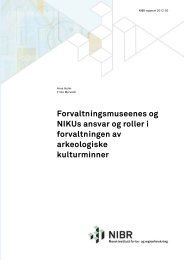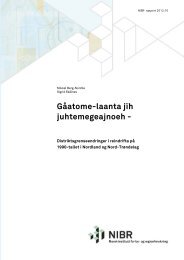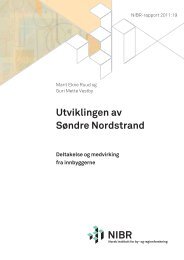Evaluation of the Southern and Eastern Africa Regional Centre for ...
Evaluation of the Southern and Eastern Africa Regional Centre for ...
Evaluation of the Southern and Eastern Africa Regional Centre for ...
- No tags were found...
Create successful ePaper yourself
Turn your PDF publications into a flip-book with our unique Google optimized e-Paper software.
grow to become institutional impact’. The example <strong>of</strong> <strong>the</strong> role <strong>of</strong> training localjustices in basic human rights was given, to illustrate that change does not comeabout quickly but ra<strong>the</strong>r gradually ga<strong>the</strong>rs momentum.A key factor in <strong>the</strong> <strong>Evaluation</strong> Team’s opinion is <strong>the</strong>re<strong>for</strong>e whe<strong>the</strong>r <strong>the</strong>re is scope <strong>for</strong>leverage that could be provided in filling <strong>the</strong> gap between graduates <strong>and</strong> institutional<strong>and</strong> structural change. Whe<strong>the</strong>r <strong>the</strong>re is need <strong>for</strong> more <strong>of</strong> a role <strong>for</strong> <strong>the</strong> <strong>Centre</strong>beyond <strong>the</strong> course <strong>and</strong> graduates requires some reflection.3.6 Role <strong>of</strong> <strong>the</strong> <strong>Centre</strong> beyond course <strong>and</strong> graduatesThe <strong>Centre</strong> is described as a key resource, most notably <strong>for</strong> its graduates. In addition,however, it is literally a resource in terms <strong>of</strong> its facilities are clearly being used byundergraduates <strong>and</strong> respondents who also said <strong>the</strong>y still used it after graduation <strong>and</strong>o<strong>the</strong>rs who do so. In a broader sense, several in<strong>for</strong>mants perceive <strong>the</strong> <strong>Centre</strong> as anauthoritative voice on Women’s Law, one highly respected both by government <strong>and</strong>civil society. One key actor in government suggested <strong>the</strong> <strong>Centre</strong> is a ‘fabulousresource <strong>for</strong> me in government work’. The <strong>Centre</strong> is playing various roles beyond <strong>the</strong>Master’s degree <strong>and</strong> teaching. For example, <strong>the</strong>re are initiatives to establish a draftbill <strong>for</strong> family law courts. This was seen as an asset by <strong>the</strong> Ministry <strong>of</strong> Women Affairsespecially because <strong>the</strong> Ministry has few lawyers <strong>and</strong> <strong>the</strong> <strong>Centre</strong>’s role in providingresearch into <strong>the</strong> process is very valuable. One well-placed women’s organisation(WAG) suggested that <strong>the</strong> <strong>Centre</strong> is visible <strong>for</strong> those working in <strong>the</strong> women’s sector.In addition, <strong>the</strong> <strong>Centre</strong> conducted a gender analysis with ZWLA <strong>of</strong> <strong>the</strong> newconstitution. And many o<strong>the</strong>rs portrayed <strong>the</strong>m as filling in <strong>the</strong> gaps with <strong>the</strong>irresearch. Sometimes when unsuccessful <strong>for</strong> funding, an organisation would approach<strong>the</strong> <strong>Centre</strong> regarding research or o<strong>the</strong>r proposals. In one particular case, in whichSEARCWL plays an advisory role, through <strong>the</strong>ir influence as board member, oneorganisation told us: ‘We had a problem with <strong>the</strong> chief magistrate avoiding us, butwhen we got partnership with <strong>Centre</strong>, Stewart was able to arrange meeting with<strong>the</strong>m. Now we are training 87 magistrates’.The evaluators are aware that <strong>the</strong> <strong>Centre</strong> staffs are very active in terms <strong>of</strong>involvement in activities <strong>and</strong> networks fur<strong>the</strong>ring women’s issues in Zimbabwe. Afew additional examples are that <strong>the</strong>y can attend a range <strong>of</strong> relevant activities asdiverse as <strong>the</strong> launch <strong>of</strong> <strong>the</strong> SADC Gender Barometer; a UN Women discussion<strong>for</strong>um; or, presenting at Zimbabwe Lawyers <strong>for</strong> Human Rights (ZLHR).Collaboration with ZWLA has been particularly noticeable. Most recently, thiscollaboration has involved magistrates training (see above) <strong>and</strong>, in addition, cooperationwith government on Family courts. There has also been collaboration on aproject on inheritance rights with <strong>the</strong> Legal Resource Foundation (LRF).Fur<strong>the</strong>rmore, SEARCWL provided input to <strong>the</strong> EU’s gender support programme.SEARWCL staff have been, or, are Board members <strong>of</strong> various organisations (e.g.until recently, Musasa <strong>and</strong> also ZWLA). Staffs have also joined meetings with severalmore such as WAG who had come to <strong>the</strong>m 3 times during <strong>the</strong> year; <strong>and</strong> are amember <strong>of</strong> <strong>the</strong> umbrella organisation, <strong>the</strong> Women’s Coalition. They also work withWomen in Law in Sou<strong>the</strong>rn <strong>Africa</strong>. Often this work is directly at <strong>the</strong> request <strong>of</strong> or inconjunction with graduates <strong>of</strong> <strong>the</strong> programme.37



